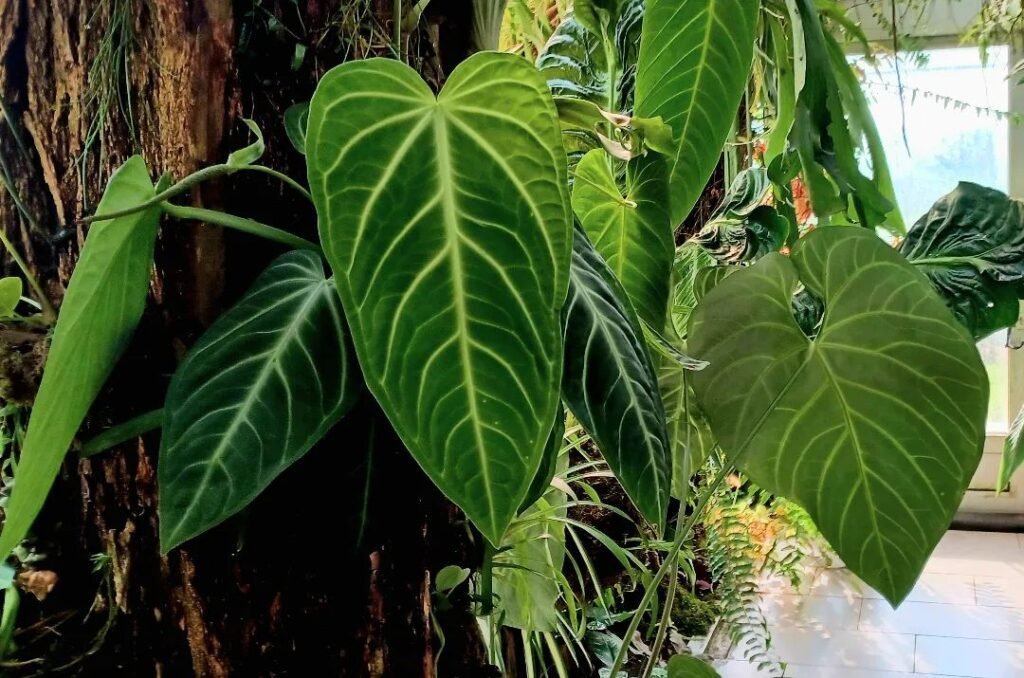Let me take you on a journey to the captivating world of exotic plants. It all started when I stumbled upon a stunning Anthurium Villenaorum plant – its vibrant green leaves and vibrant red spadix instantly caught my eye. Unable to resist its allure, I decided to bring this tropical beauty into my home as an indoor companion.
Little did I know, caring for my new Anthurium Villenaorum in the UK would be an adventure of its own. As I delved into the world of indoor plant care, I discovered the unique needs and requirements of this exquisite plant species.
Appearance of Anthurium Villenaorum


As a keen gardener, I’ve always been fascinated by the rich diversity of plants that can brighten up any indoor space, and the Anthurium Villenaorum is no exception. This particular plant is somewhat compact, typically reaching heights of about 30 to 45 centimetres. What really sets it apart, however, are its remarkable, heart-shaped leaves. These leaves possess a velvety texture that not only feels luxurious to the touch but also adds a visually luxurious element to the plant. The colour of these leaves usually ranges from a deep, dark green to shades that might include hints of bronze or purple, depending on the variety.
One of the most captivating features of the Anthurium Villenaorum is its flowers. The plant boasts a bright red spadix, which stands out boldly against the backdrop of its foliage. This spadix is complemented by a white spathe, creating a striking contrast that is sure to catch the eye. This unique combination of velvety leaves and a vividly coloured spadix makes the Anthurium Villenaorum a spectacular addition to any collection of indoor plants.
For new gardeners looking to introduce a touch of elegance to their indoor spaces, the Anthurium Villenaorum offers just that, with the added benefit of being relatively easy to care for. Its compact size makes it ideal for smaller spaces, allowing anyone to enjoy the beauty of this plant, regardless of the size of their home.
 An incredible aspect of the Anthurium Villenaorum is its remarkable longevity. With the right care, these plants can become enduring additions to your indoor garden, often thriving for well over a decade. Their resilience and adaptability, honed in the dense rainforests of their native habitat, allow them to flourish in domestic settings for many years, making them not just temporary beauties, but long-term companions.
An incredible aspect of the Anthurium Villenaorum is its remarkable longevity. With the right care, these plants can become enduring additions to your indoor garden, often thriving for well over a decade. Their resilience and adaptability, honed in the dense rainforests of their native habitat, allow them to flourish in domestic settings for many years, making them not just temporary beauties, but long-term companions.
Light Requirements for Anthurium Villenaorum


Proper lighting is essential for the health and growth of an Anthurium Villenaorum plant. These tropical houseplants thrive in bright, indirect light, mimicking their natural habitat in the rainforests. To provide the ideal light conditions, place your Anthurium Villenaorum near a window where it can receive filtered sunlight. Alternatively, position it in a well-lit room with ample natural or artificial light.
It’s important to note that direct sunlight should be avoided, as it can scorch the leaves and cause damage to the plant. A sheer curtain or blinds can be used to filter the intense rays effectively.
Insufficient light can also affect the growth and flowering of your Anthurium Villenaorum. If your plant doesn’t receive enough light, you may notice slower growth and a decrease in bloom production. Ensure that your Anthurium Villenaorum is given adequate light to thrive and flourish.

Watering Tips for Anthurium Villenaorum

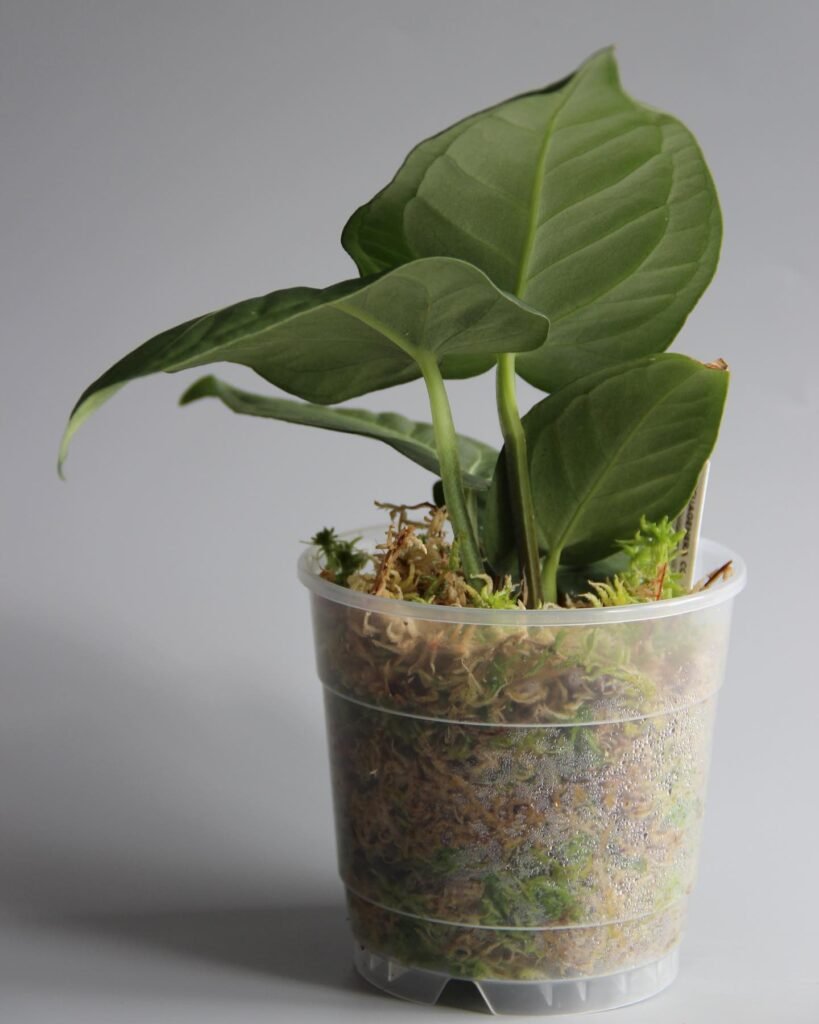
Proper watering is crucial for the care of Anthurium Villenaorum, ensuring its optimal growth and health. Follow these watering tips to keep your indoor tropical houseplant thriving:
- Keep the soil damp, but avoid overwatering. Anthurium Villenaorum prefers slightly moist soil, but it should not be wet or soggy.
- During the growing season, water the plant once or twice a week, depending on the moisture level of the soil.
- In winter, reduce the watering frequency to once a week, as the plant’s growth slows down during this time.
- Before watering, check the moisture level of the soil by inserting your finger into the top inch. If it feels dry, it’s time to water.
- Avoid letting the plant sit in standing water, as it can lead to root rot and other complications. Ensure proper drainage in the pot.
By following these watering tips, you can maintain the ideal moisture level for your Anthurium Villenaorum, promoting its overall health and preventing any water-related issues.

Fertilizing and Soil for Anthurium Villenaorum


Proper fertilization and soil conditions are crucial for the healthy growth of Anthurium Villenaorum. By following these fertilizing tips and soil requirements, you can ensure that your indoor plant thrives in its environment.
- Fertilizing Tips: Anthurium Villenaorum benefits from regular fertilization during the growing season. Use a balanced liquid fertilizer once a month to provide essential nutrients. To prevent root burn, dilute the fertilizer to 50% strength before applying it.
- Soil Requirements: A well-draining potting mix that retains some moisture but doesn’t become waterlogged is ideal for Anthurium Villenaorum. Consider using a mixture of peat moss, perlite, and orchid bark to create the perfect growing medium.
Regular fertilization and the right soil conditions are key to ensuring the optimal health and growth of your Anthurium Villenaorum. Remember to dilute your fertilizer and use well-draining potting mix to support the plant’s needs.
Your Anthurium Villenaorum plant will thank you for providing it with the right nutrients and soil conditions for optimal growth. By following these fertilizing tips and soil requirements, you can enjoy the beauty of your Anthurium Villenaorum plant for years to come.

Pruning and Maintenance for Anthurium Villenaorum
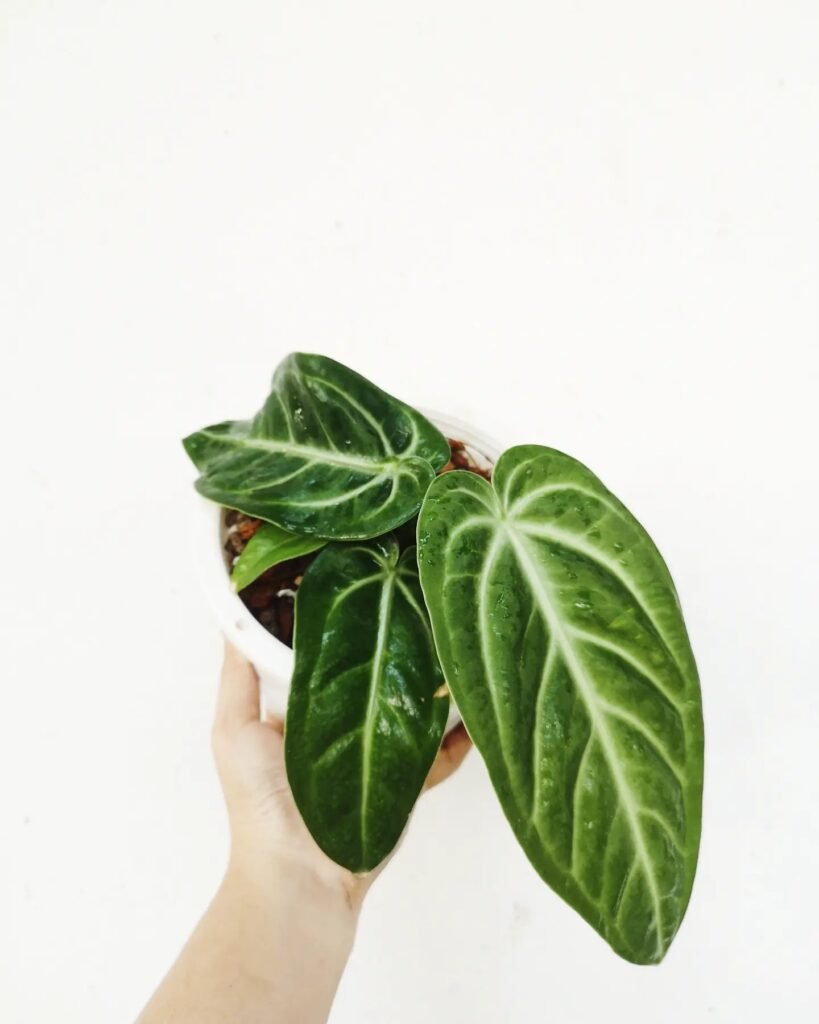
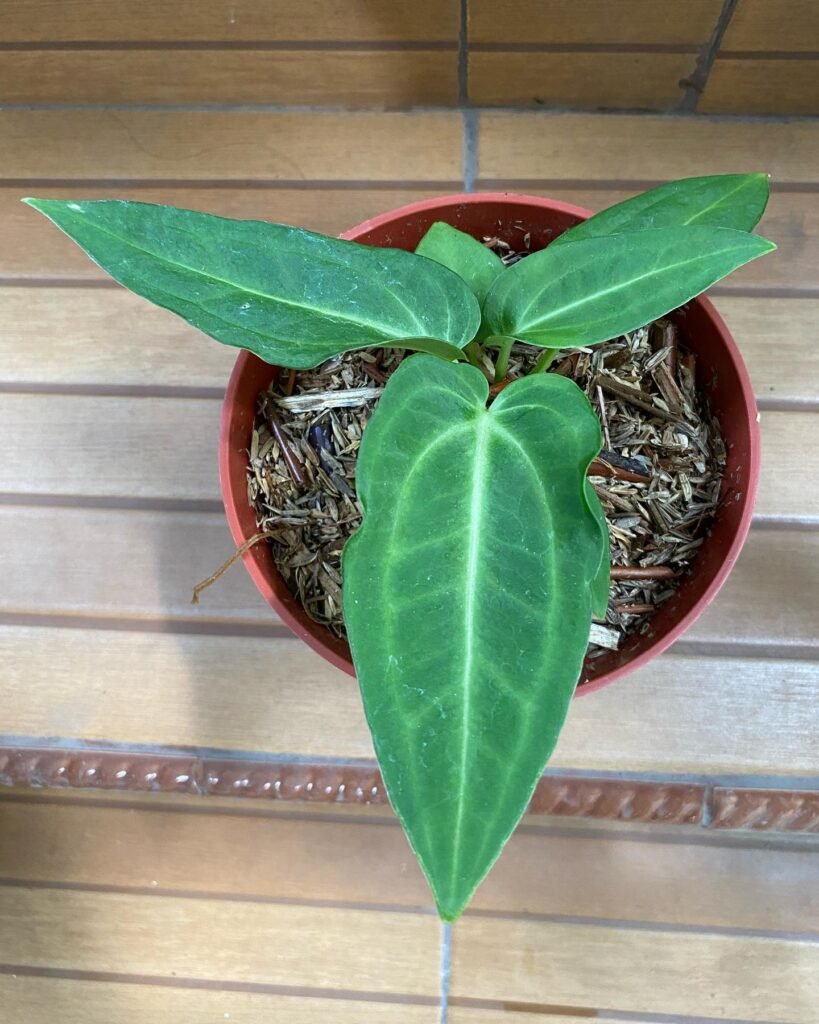
Pruning is an essential part of anthurium plant care, as it helps maintain the appearance and health of your Anthurium Villenaorum. To keep your plant looking its best, it’s important to regularly inspect the leaves and remove any yellow or damaged foliage. Pruning these leaves encourages new growth and ensures the overall aesthetics of the plant remain intact.
When pruning your Anthurium Villenaorum, it’s crucial to use clean and sharp pruning shears. This helps make clean cuts and prevents tearing the foliage, minimizing the risk of infection or damage to the plant. As you trim the leaves, be sure to cut them close to the main stem.
“Pruning the yellow or damaged leaves not only promotes new growth but also maintains the plant’s overall aesthetics.”
In addition to pruning the leaves, it’s also beneficial to remove spent flowers from your Anthurium Villenaorum. This encourages the production of new blooms and keeps the plant looking fresh and vibrant. Simply cut the spent flower stalks near the base, being careful not to damage any emerging buds or foliage.
“Removing spent flowers helps stimulate the production of new blooms and keeps your Anthurium Villenaorum looking beautiful.”
By regularly pruning and maintaining your Anthurium Villenaorum, you can ensure its optimal growth and longevity as an indoor plant. Remember to take care when using pruning shears and always make clean cuts to avoid causing harm to the plant. With proper pruning and maintenance, your Anthurium Villenaorum will continue to thrive and provide beauty to your indoor space.

Propagating Anthurium Villenaorum

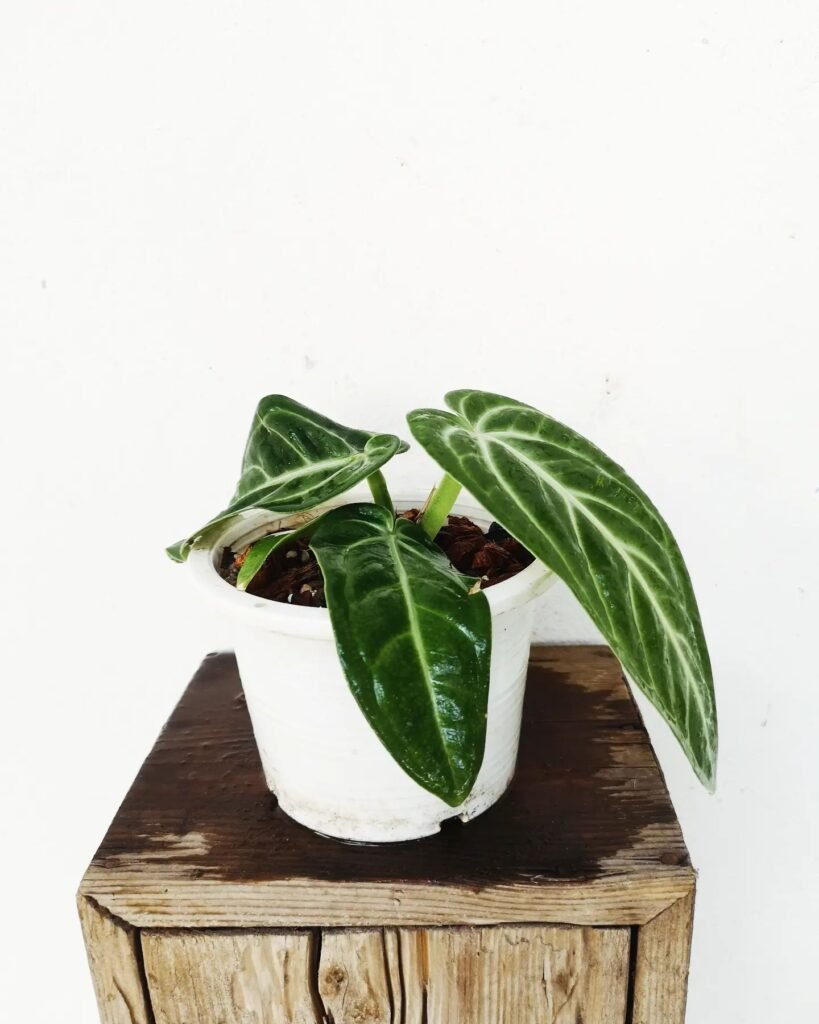
Propagating Anthurium Villenaorum is a rewarding way to expand your collection of these stunning plants. There are two primary methods for propagating Anthurium Villenaorum: division and stem cuttings.
Division
To propagate Anthurium Villenaorum through division, carefully separate the root ball into multiple sections, ensuring that each section has roots and foliage. Use a sharp, sterilized knife or pruners to ensure clean cuts. It’s important to divide the plant when it is actively growing, preferably in spring or early summer.
“Division is an effective method for propagating Anthurium Villenaorum as it allows each new division to develop its own root system and continue growing independently.”
Stem Cuttings
Another popular method of propagating Anthurium Villenaorum is through stem cuttings. Select a healthy stem with at least two nodes and remove any lower leaves. Dip the cut end in rooting hormone to promote root development. Plant the cutting in a moist potting mix, making sure to bury at least one node in the soil. Keep the soil consistently moist, and new growth should appear within a few weeks.
“Stem cuttings are a great way to create new Anthurium Villenaorum plants, especially if you want to preserve specific traits or characteristics.”
Whichever method you choose, it’s important to provide the right conditions for the newly propagated Anthurium Villenaorum plants. Place them in a warm and humid environment with bright, indirect light. Follow the care instructions for mature plants to ensure their healthy growth and development.

Repotting Tips for Anthurium Villenaorum
As part of anthurium plant care, repotting is an important task to ensure the well-being of your Anthurium Villenaorum. Generally, repotting should be done every 2-3 years or when you notice that the roots have outgrown the current pot. This allows the plant to have enough space for root expansion and prevents the roots from becoming root-bound.
When repotting your Anthurium Villenaorum, choose a slightly larger pot with good drainage. This will provide the plant with enough room to grow and prevent waterlogging, which can lead to root rot. Ensure the new pot has drainage holes to allow excess water to escape.
Before repotting, gently remove the plant from its current pot, taking care not to damage the roots. Once the plant is out, loosen the roots slightly by gently rubbing them, which encourages the roots to grow into the new soil.
Place the Anthurium Villenaorum in the new pot, positioning it centrally, and then backfill the pot with fresh potting mix. Use a mix specifically formulated for houseplants or create your own well-draining mix using equal parts peat moss, perlite, and orchid bark.
After repotting, water the plant thoroughly to help settle the soil and hydrate the roots. Be sure not to overwater, as this can lead to root rot. Allow the soil to dry out slightly between waterings to avoid excess moisture.
By following these repotting tips, you can ensure that your Anthurium Villenaorum has the proper space and nutrients it needs to continue thriving and beautifying your indoor space.
 Did you know that Anthurium Villenaorum is part of a unique group of plants capable of thermogenesis? Unlike most plants, Anthuriums can generate their own heat, which helps to disperse their scent and attract pollinators, even in cooler temperatures. This remarkable biological feature not only aids in their reproduction in the wild but also highlights the sophisticated adaptation strategies of tropical plants to ensure survival and propagation.
Did you know that Anthurium Villenaorum is part of a unique group of plants capable of thermogenesis? Unlike most plants, Anthuriums can generate their own heat, which helps to disperse their scent and attract pollinators, even in cooler temperatures. This remarkable biological feature not only aids in their reproduction in the wild but also highlights the sophisticated adaptation strategies of tropical plants to ensure survival and propagation.
Extra Care Tips for Anthurium Villenaorum
In addition to the basic care requirements mentioned above, providing some extra care for your Anthurium Villenaorum will ensure its optimal growth and health. This tropical houseplant thrives in warm and humid environments, so maintaining a temperature between 65-85°F (18-29°C) is essential for its well-being. In addition to temperature, high humidity levels are also crucial for this indoor plant’s success.
To maintain the required humidity, mist the leaves of your Anthurium Villenaorum regularly or consider using a humidifier to create a humid microclimate around the plant. This will mimic its natural tropical habitat and keep your plant happy. Remember to protect your Anthurium from cold drafts and temperature fluctuations, as they can negatively impact its growth and overall health.
Regular inspection of the leaves for pests and diseases is important to catch any issues early on. Look out for common problems such as aphids, mealybugs, and leaf spots. If you notice any signs of infestation or disease, take prompt action to treat the issue. This could involve using organic pest control methods or applying appropriate fungicides to protect your precious Anthurium Villenaorum from any further harm.
By following these extra care tips alongside the basic care instructions, you’ll be well on your way to creating an optimal environment for your Anthurium Villenaorum. With the right conditions and tender care, this stunning tropical plant will thrive and bring beauty to your indoor space for years to come.
FAQ about Caring for Your Anthurium Villenaorum

Have you ever wondered how to properly care for your Anthurium Villenaorum? Check out my detailed FAQ for essential advice on nurturing your Anthurium Villenaorum. Learn everything you need to know about the best lighting, watering practices, and general upkeep to keep your plant lush and flourishing.
Your Anthurium Villenaorum thrives in bright, indirect light. Avoid direct sunlight, which can scorch its leaves. A spot near a window that gets filtered light is ideal.
Water your plant when the top inch of soil feels dry. Typically, this means watering once a week, but adjust based on humidity and temperature. Overwatering can lead to root rot.
Yes, it prefers well-draining, aerated soil. A mix of orchid bark, perlite, and peat moss is a good option, providing the right balance of drainage and moisture retention.
If the leaves start to yellow or develop brown spots, your plant might be getting too much direct sunlight. Move it to a shadier spot.
In the UK, it’s best kept as an indoor plant due to its preference for warm, humid conditions that are hard to maintain outdoors year-round.
Signs include yellowing leaves, wilting, and a soggy base. Let the soil dry out more between watering if you notice these symptoms.
Place a humidifier nearby, group it with other plants, or sit the pot on a tray filled with pebbles and water to increase surrounding humidity.
Repot every 2-3 years or when you see roots growing out of the drainage holes. Spring is the best time to repot, giving the plant time to grow into its new pot during the growing season.
Prune any yellow or dead leaves at the base using clean, sharp scissors. This keeps your plant healthy and encourages new growth.
Brown leaves can be caused by under-watering, low humidity, or exposure to direct sunlight. Check the plant’s environment and adjust care accordingly.
Use a balanced, water-soluble fertilizer diluted to half strength every 4-6 weeks during the growing season. Avoid fertilizing in winter.
Inspect regularly for signs of pests such as spider mites or aphids. Treat infestations with insecticidal soap or neem oil, following product instructions.
Lack of flowers can be due to insufficient light, over- or under-watering, or the need for fertilization. Ensure your care routine meets its needs.
Propagate by division during repotting. Carefully separate the root ball into smaller sections, ensuring each has a part of the root system, and pot them separately.
Yes, it’s toxic to cats and dogs if ingested, causing irritation and swelling of the mouth and throat. Keep it out of reach of pets.
It prefers temperatures between 18°C and 25°C. Avoid sudden temperature changes and drafts.
Yes, if your bathroom is well-lit and you remember to water it. The high humidity is beneficial for this plant.
Gently wipe the leaves with a damp cloth to remove dust. This helps the plant absorb more light and improves its overall health.
I trust this has laid the groundwork for you to become adept at caring for your Anthurium Villenaorum. Should you find yourself puzzled or curious about anything else, please do leave your questions below – I’m keen to lend a hand. Keep in mind, every gardener’s journey begins with a single seed, and your Anthurium Villenaorum is your ticket to a thriving garden full of wonders. Let’s nurture this green adventure together, step by step.

